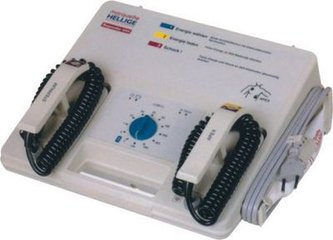The popularity of defibrillators combined with appropriate training programs can save more lives in patients with cardiac arrest
Release date: 2016-08-31

According to a study released today at the ESC Congress 2016 , automatic external defibrillators ( AEDs ) cannot save lives if the public does not have basic first aid knowledge . The study found that the public distribution of defibrillators ( PAD ) projects in France is unevenly distributed and has a significant impact on the survival rate of out-of-hospital cardiac arrest ( OHCA ).
The International Cardiovascular Disease Specialist Dr. Nicole Karam of the Georges Pompidou Hospital in Europe , on behalf of Professor Xavier Jouven , said that the survival rate of OHCA has been very low. The importance of control in the first few minutes of OHCA has been well recognized, and PAD projects have been developed to increase the penetration of AED and basic first aid knowledge. However, no studies have been conducted to assess the actual development of these projects.
Coordinated by Eloi Marijon , this study is a five- year national forward-looking assessment of PAD projects in 51 regions of France . PAD project with two cases were evaluated: AED deployment density (per 100,000 inhabitants / 1000km2) and received government to provide basic first aid or individual self-training proportion of the population 5 years (per 100,000 inhabitants).
The researchers found that the development of PAD varies widely across regions . Per 100,000 people trained trainers proportion ranging from 6955 to 36636, while the per 100,000 inhabitants / 1000km2 AEDs deployment densities ranging from 5-3399. Overall, the author AED density and the proportion of trained trainers in the area above the median is limited, only 35.3% of regional development project in a significant AEDs (per 100,000 inhabitants / 1000km2 in the deployment density more than 22 per The proportion of trainees in 100,000 people is above 13866 ).
According to Dr. Karam , these differences far exceed our expectations. About one-third of the PAD projects in the region are relatively well developed, while others are either under-invested in two types of indicators ( 37.2% ) or only concerned. One of the two equipped indicators. There is no correlation between the implementation rates of the two equipped indicators, as there is no universal approach to effectively and fully implement the PAD project.
Another interesting finding is that there is no correlation between national and regional education levels, indicating limited cooperation between the two policymakers. We can expect more local investment in areas with less state investment, or vice versa, but this is not the case, which further reflects the lack of PAD project implementation policies.
OHCA survival rates vary widely from region to region, ranging from 0 to 43.8% . Survival rates increase as the level of PAD implementation increases, demonstrating the importance of the PAD program in improving survival. However, survival rates are lower in areas with lower levels of education, regardless of the density of AEDs in the area ( 5.9% and 4.7% ), and survival rates will only increase as population education increases.
The correlation between survival rate and trained population (correlation coefficient 0.89 ) is stronger than the correlation between AEDs ( 0.25 ). In the multivariate analysis, only education levels were independently associated with survival (ratio 1.64 P = 0.004 ).
Dr. Karam concluded that although this study confirmed the effectiveness of the PAD project, it also showed unevenness in implementation ( more than 100 times), especially the unevenness of investment in each of the equipped indicators. The study also showed that if the use of AEDs cannot be combined with trained personnel and the benefits are not fully realized, the training of personnel should be taken into account when planning public health policies.
Source: Noble
We, Jiangsu YanFang Medical Technology Co., Ltd, commenced our medical gloves manufacturing in 2020. Currently, we possess a total of 12 high-capacity NBR Glove Dipping Production Lines.
Likewise, we are not only certified with ISO9001, ISO13485 but also fully complied with the essential USFDA, CE Compliances, as well as obtaining relevant accreditation of FDA510K, EN455, and EN374.
Nonetheless, our NBR Examination, Chemotherapy, and Food Grade products are being well established in both US and Europe markets.
We look forward to cooperating and working closely with our valuable customers and stakeholders, who are seeking long-term business relationships in high-quality NBR glove supplies.
Medical Grade Nitrile Gloves,Nitrile Grade Medical Gloves,Medical Examination Nitrile Glove,Blue Examination Nitrile Gloves
Jiangsu Yanfang Medical Technology Co.,Ltd. , https://www.yanfangchina.com